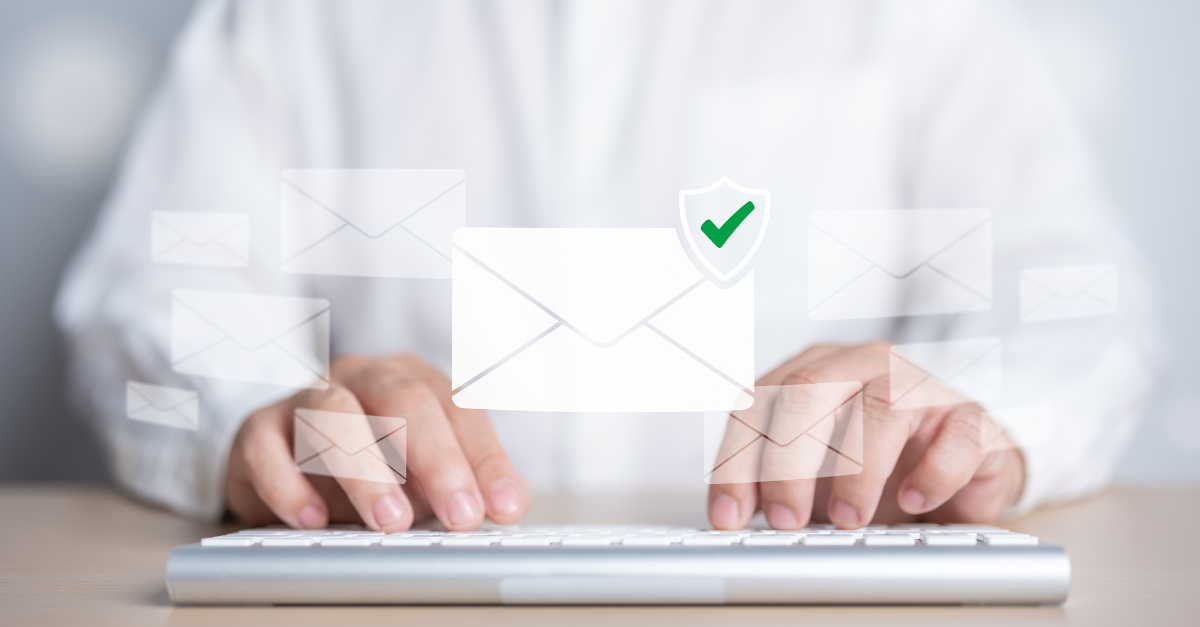We all use email everyday both in our personal life and within business. The total number of business and consumer emails sent and received per day will exceed 306 billion in 2020 and is forecast to grow to over 361 billion by year-end 2024 according to The Radicati Group. That is over half the world population using email.
But do we understand the importance of ensuring our emails are secure and why?
Here are five reasons why email security must be a priority for your business.
1. In today’s increasingly digital world, trust is everything.
Especially now that many of us are conducting business and communications from afar, it’s critical you have assurance that the emails you are receiving are from the correct, intended person. You want to be equally certain that recipients know the emails you are sending are unquestionably yours. Imagine the time – not to mention costs – saved by not having to double-check and confirm whether someone sent an email.
Signing emails with a digital certificate is the best way to visually indicate to recipients – customers, colleagues, suppliers – that an email can be trusted. Digital certificates backed by Public Key Infrastructure (PKI) are the most commonly used technology for securing email, and it’s recognized by virtually all applications. It means you hold and own the keys that make your signature trusted and secure.
2. Email security can help you avoid business risk.
Encryption is another important component of email security. If you send emails without encryption anyone can have access to the information which is contained within it – in other words, someone could intercept the email, read or even change its contents, and have it delivered to the sender in your name. Giving hackers access to this personal information is a quick way to reduce or eliminate trust.
3. By securing your emails you can reduce compliance risks and associated fines.
Many businesses need to adhere to rules and regulations which are designed to protect the personal information of consumers. The HIPAA Privacy Rule, for example, was enacted to protect the health information of a patient. Healthcare providers must be very careful how they access, store, and use this data. As more doctors are turning to digital communications in their daily practice, they must take the proper precautions to “limit the amount or type of information disclosed through the unencrypted e-mail.” See HHS.gov/hipaa for a few other FAQs regarding email.
GDPR is another important regulation that requires organizations to protect users’ personal data “in all forms” – that includes data that is collected and transferred via email. You can learn more about the GDPR guidelines for email at GDPR.eu.
Failure to comply with the necessary regulations could result in substantial fines.
4. Email encryption helps you protect confidential information.
Email encryption protects confidential information such as credit card details, bank account numbers, and so on. It prevents outsiders from getting in between your email and mail servers and intercepting sensitive data. One way hackers do this is via phishing attacks. Just as more people are sending emails than ever before, the number of cybercriminals using email to do their dirty work is rising too. A report from PCMag claims that phishing attacks have increased 350% since social distancing due to the COVID-19 pandemic went into effect. Allowing malicious entities or hackers to access your data, you are putting your business at risk.
5. Signing your emails can detract identity thieves.
If a person gets hold of your personal information such as username and password, they can use your identity to send false emails that look as though they have come from you, causing serious issues. Unfortunately, this has probably happened to each of us at some point or another.
But if everyone digitally signed their emails with their identities, phishing emails wouldn’t exist – we would know who’d sent them!
The search for an email encryption solution that suits your organizations’ needs can be a bewildering experience. There are many options available but at the end of the day what you need is a solution that’s easy to use, reliable, secure, and cost effective.
S/MIME, which stands for Secure/Multipurpose Internet Mail Extensions, is a technology that allows you to encrypt your emails. It also allows you to digitally sign your emails to verify you as the legitimate sender of the email. This can help you identify which emails are authentic and which may have been sent as part of a phishing attack, too.
S/MIME is based on asymmetric cryptography that uses a pair of mathematically related keys to operate – a public key and a private key, protecting your emails from unwanted access. It is not possible to figure out the private key based on the public key. Emails are encrypted with the recipient’s public key. The email can only be decrypted with the corresponding private key. Given this, it is not surprising S/MIME is the most commonly used email security protocol today – it’s extremely easy to use and all email clients and servers are compatible right out of the box.
For enterprise and SMB employees, S/MIME allows you to sign your emails to prove your identity as a legitimate business. Every time you create and sign an email, your private key applies your unique digital signature into your message. When your recipient opens your email, your public key is used to verify the signature. This ensures your recipient knows the emails really came from you. Signing emails authenticates your identity in an age where phishing attacks have already become so clever and it has become increasingly difficult to identify spoofed emails.
If you want to establish integrity, uphold privacy, preserve sensitive data, and mitigate phishing and other email attacks, you need S/MIME. For a free demo to see our email security solutions in action or if you’d like to speak to a GlobalSign team member about how to implement S/MIME in your organization, reach out to us today.







